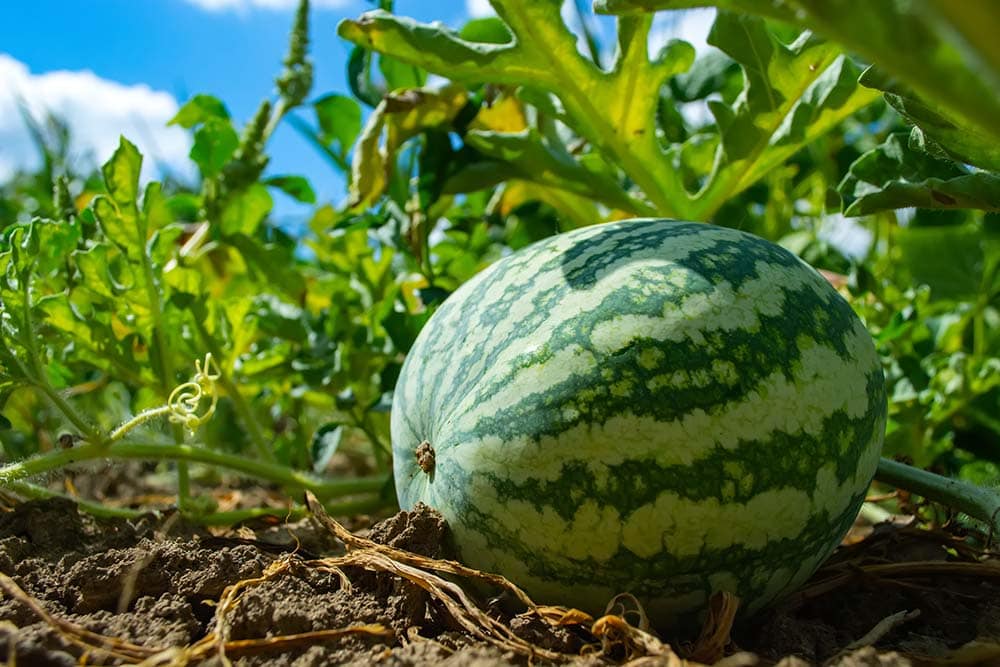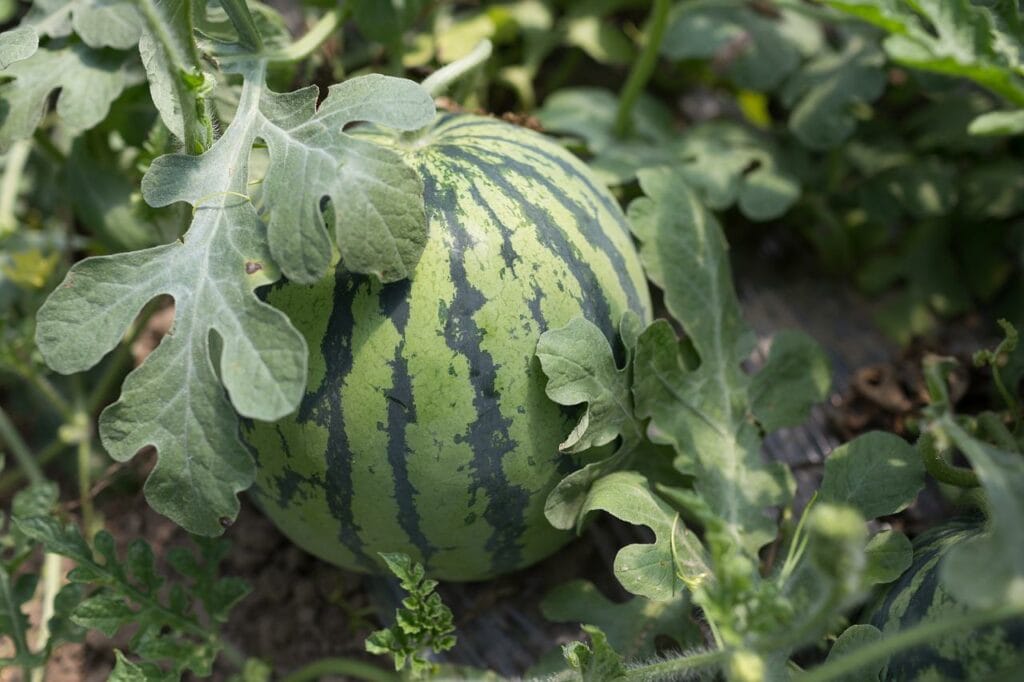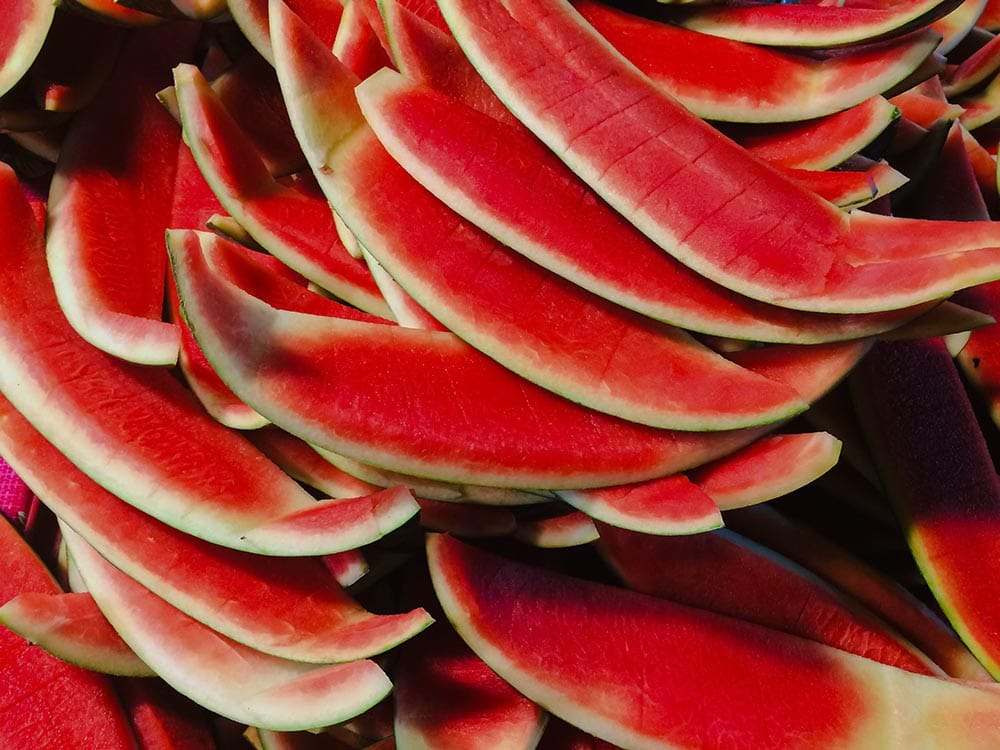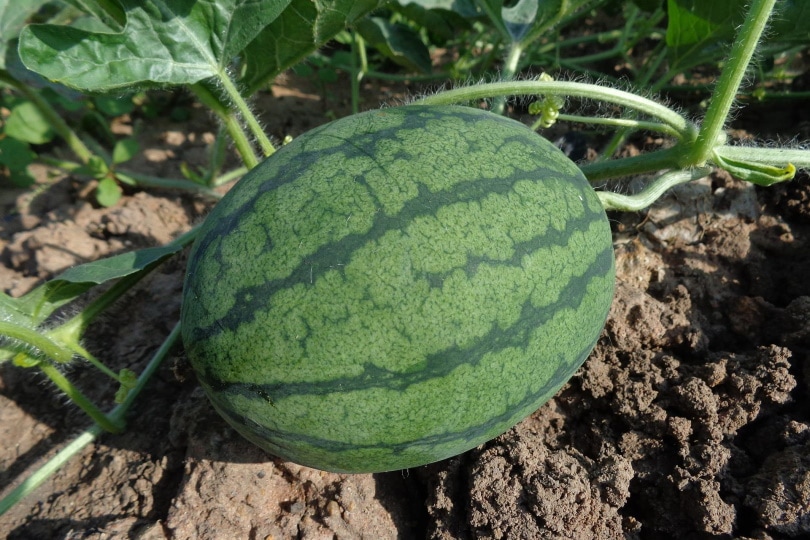11 Best Watermelon Varieties to Grow at Home (With Pictures)
-
- Last updated:

Have you ever thought about growing some watermelons in your garden?
Biting into a sweet and juicy slice of watermelon fresh from your garden is the best thing to do on a hot summer day. These amazing fruits can be eaten raw or used to make amazing drinks. They are excellent for hydration, and they also contain vitamin A and C. Best of all, you can grow them at home without much fuss.
In this article, get to learn about the different types and varieties of watermelons you can grow. But before then, let’s first learn the different classifications under which the different types of watermelons will fall.

Classification of Watermelons
- Picnic Watermelons: Picnic watermelons are one of the most popular cultivars available. This type grows quite large; it can feed a group of people at a picnic. Some have a long oblong shape while others are round. One defining factor about Picnic watermelons is their long growing period. This means you have to wait longer to harvest the fruits.
- Giant Watermelons: Did you know that there are giant watermelon cultivars that can weigh upwards of 100 pounds at full ripeness? Just be ready to ask for assistance when it’s time to harvest them.
- Icebox Watermelons: Icebox watermelons weigh about 15 pounds each and are smaller than the Picnic cultivars. This makes them easy to store in the refrigerator once ripe. This is great news since you don’t have to finish eating the entire watermelon once you slice some pieces. The watermelon has a shorter growing period meaning you’ll be harvesting them sooner. This makes them a favorite for gardeners.
- Small Watermelons: Not all watermelons are giants requiring extra help to bring them all inside. There are some varieties available that produce small fruit. Small watermelons can weigh anywhere from 5 to 7 pounds, depending on the variety.
- Seedless Watermelons: Watermelons can have lots of seeds that you have to either remove or eat when the fruit ripens. However, if you aren’t a fan of eating seeds, how about growing a seedless watermelon? These are easy to grow, and they fit so well in a salad or smoothie. This means skipping the tedious process of removing countless seeds.
- Yellow, White, or Orange Flesh Watermelons: A garden requires variety in terms of color. If you want to grow a unique watermelon at home, consider the yellow, white, or orange flesh cultivars. These make the perfect addition to a fruit salad and are also great for juicing.
Note that the various types of watermelons can fall under more than one classification. For instance, a cultivar can be small and seedless at the same time.
The 11 Great Watermelon Varieties to Grow at Home
1. All Sweet

| Recommended Spacing: | 36 inches |
| USDA Hardiness Zone: | 5a |
| Harvest Period: | 90 to 105 days |
All-Sweet is one of the most popular Picnic watermelons that you can grow at home. What most people picture when thinking about watermelons is the All-Sweet variety. The plant tends to grow rapidly, spreading far in a garden.
Expect to harvest fruits weighing 25 to 35 pounds each. A mature All-Sweet watermelon can be 17 to 19 inches long and 7 inches wide.
While the watermelons are green, they tend to have darker and lighter stripes. The flesh is bright red and sweet. When planting this cultivar in your garden, make sure the vines have enough room to spread.
2. Crimson Sweet
| Recommended Spacing: | 39 inches |
| USDA Hardiness Zone: | 2 through 11 |
| Harvest Period: | 80 to 85 days |
If you have enough space, you can plant Crimson Sweet watermelons. This cultivar is disease-resistant, and it grows large and healthy. It is also among the best-tasting watermelons.
The fruit will have an oval shape with ends that seem blunt, a firm exterior and juicy bright red flesh when cut open. A healthy one can weigh between 15 and 25 pounds.
Pick a spot that receives good sunlight and rich, well-draining soil with enough nutrients to feed the large fruits.
3. Blacktail Mountain

| Recommended Spacing: | 8 inches |
| USDA Hardiness Zone: | 4 through 11 |
| Harvest Period: | 70 to 75 days |
If you live in a colder region, you can benefit from growing Blacktail Mountain watermelons. This is one of the reasons they fall under the icebox category. These watermelons originate from Idaho. They are more cold-resistant compared to other varieties.
The fruit can weigh between 6 to 15 pounds, a perfect size to store in the refrigerator after you take off some slices.
While some watermelons have bright-red flesh, Blacktail Mountain’s color is scarlet. You can pick the fruit before it’s fully ripe so that it stores longer. Thanks to the short growing season, you can enjoy some watermelon in short durations.
4. Bush Sugar Baby
| Recommended Spacing: | 12 inches |
| USDA Hardiness Zone: | 3 through9 |
| Harvest Period: | 80 days |
Bush Sugar Baby is another variety of IceBox watermelon that you can plant in your garden at home. Just as the name suggests, this watermelon grows like a bush. Since it doesn’t spread so much, it’s perfect for growing in containers or in small garden spaces. It saves space; the bush can be 15 to 24 inches tall, so pick a spot with some space for the plant.
The fruit weighs around 12 pounds. It is small and round, which makes it fit perfectly in the fridge. They grow well in cooler climates, but they can also thrive in hot areas that receive minimal rainfall.
5. Little Darling

| Recommended Spacing: | 24 to 36 inches |
| USDA Hardiness Zone: | 4 through 11 |
| Harvest Period: | 65 to 70 days |
If you want a variety that doesn’t produce large fruits, Little Darling is one of the small cultivars perfect for a home garden. This hybrid watermelon weighs 5 to 7 pounds when fully ripe and ready to pick.
The fruit has an oblong shape and dark-green exterior. When you cut it, you come across the most amazing bright red sugary flesh sugary.
Little Darling vines aren’t too long so you can save space in the garden to grow other plants. Ensure the soil has enough organic manure for the plant.
6. Mini Love
| Recommended Spacing: | 24 to 36 inches |
| USDA Hardiness Zone: | 2 through 11 |
| Harvest Period: | 70 days |
Imagine a watermelon that you can serve once and you don’t have to worry about keeping leftovers in the refrigerator. That’s the Mini Love watermelons. This variety grows small hybrid watermelons perfect for single-serving.
The plant produces numerous fruits since it’s a top producer. The flesh tastes great and the fruit is praised for its capacity to resist cracking. A mature Mini Love watermelon can weigh between 3 to 6 pounds.
The bright red flesh has a high sugar content. You can choose to plant the seeds in the garden or in a container since vines won’t spread very far.
7. Black Diamond Yellow Belly

| Recommended Spacing: | 36 inches |
| USDA Hardiness Zone: | 4 through 11 |
| Harvest Period: | 90 days |
Are you ready to have some giant watermelons growing in your home garden? Black Diamond Yellow Belly fall under the ‘Giant’ type of watermelons. The oblong fruits are open pollinated and have a dark bluish-black exterior.
A fully ripe fruit can weigh 25 to 35 pounds. However, there have been some that can be over 70 pounds. All it takes is the right growing conditions to produce some amazing Giant watermelons.
Give the plant ample space as vines spread far with large leaves. One way to tell that the watermelon is ready to harvest is to check the bellow. When it turns bright yellow, you’re good to go.
8. Florida Giant
| Recommended Spacing: | 8 inches |
| USDA Hardiness Zone: | 3 through 10 |
| Harvest Period: | 90 days |
The Florida Giant watermelon variety was first developed in 1940. Since then, it’s been a favorite of many who love Giant watermelons. A mature fruit ready for harvest can weigh 40 to 50 pounds. Size depends on the growing conditions in the garden.
This native Florida watermelon has a dark-green rind and bright red flesh that is sweet and juicy, making it perfect to eat raw or make some amazing drinks. One seed planted on the ground can take 4 to 7 days to germinate, and the plant will have an annual life cycle.
9. Big Tasty

| Recommended Spacing: | 15 to 24 inches |
| USDA Hardiness Zone: | 4 through 11 |
| Harvest Period: | 85 days |
At times, dealing with seeds can be tedious. If you’d rather not do so, it’s best to grow seedless watermelons. A good example of a seedless watermelon is Big Tasty, which has an excellent flavor.
The fruit weighs 6 to 8 pounds. It grows in an oval shape, has a dark-green rind with light green stripes and bright red flesh. This variety stores well, so you are not inclined to finish the whole fruit all at once.
10. Mini Piccolo
| Recommended Spacing: | 15 to 24 inches |
| USDA Hardiness Zone: | 4 through 11 |
| Harvest Period: | 80 to 83 days |
The Mini Piccolo is also a seedless cultivar. This special variety weighs no more than 4 pounds; you can easily eat it all in one serving! The fruit has a high sugar content.
The plant is simple to grow from seed. Pick a spot that receives full sun exposure and ensure to feed the soil with organic manure. One plant can give you six fruits.
11. Orange Crisp

| Recommended Spacing: | 36 inches |
| USDA Hardiness Zone: | 4 through 11 |
| Harvest Period: | 87 days |
Not all watermelons have bright red flesh. Some, like the Orange Crisp variety, have orange flesh. This unique watermelon variety tastes amazing and is an excellent addition to your garden. A fruit can weigh 17 to 19 pounds under the right growing conditions.
How Long Does It Take for a Watermelon to Grow?
There are different types and varieties of watermelons, and they all differ when it comes to maturity duration. Basically, watermelons can take between 70 to 100 days to reach maturity. Also, you have to create the right growing conditions for the fruits to form on time.
For instance, these fruits need full sun exposure. If you live in a cooler climate, ensure your plants get at least 8 hours of sun exposure per day, especially during flowering when the plant is getting ready to produce fruits. Poor sunlight exposure affects this stage and can result in a lack of fruition come the end of the growing season.
Can Watermelons Grow in Pots?
Yes, watermelons can grow in pots at home. However, you have to make sure to pick the right pot for the job. Typically, the plants need ample space because of the spreading vines. So, you may have to go for a large growing pot with drainage holes.
In the pot, add healthy soil with lots of organic manure. Since watermelons are large fruits, they need lots of nutrients during the growing stage. The soil also needs to be well-draining.

Conclusion
Watermelons are some of the best fruits you can enjoy on a hot summer day. Not only are the fruits delicious to eat raw, you can also make different drinks using the flesh. It’s possible to cease buying watermelons in the grocery store and grow your own at home.
The good news is watermelons are a low-fuss plant that’s easy to grow from seed. There are different types and varieties listed in this article that you can pick. Ensure to provide the plant with ample nutrition, water, and sun exposure to harvest the best watermelons.
See also:8 Smart Uses for Watermelon Rinds: Creative Ideas for Reuse
Featured Image Credit: Oleksandr Yuchynskyi, Shutterstock
Contents

